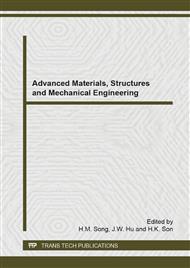p.1025
p.1031
p.1035
p.1041
p.1049
p.1055
p.1062
p.1066
p.1070
Diversity Measurement of Fuel Cell Field Using Patent Information
Abstract:
Fuel cells having a high energy conversion efficiency with low restriction of installation space is rising as a new eco-friendly renewable energy source. Fuel cells are largely divided into MCFC, SOFC, PEMFC, DMFC, etc. according to the type to be transferred. In this study the four fields were analyzed from a diversity aspect, a social network aspect and a distance aspect. Results showed PEMFC and MCFC to apply the most diverse technology, and catalyst technology and hydrogen fuel manufacturing areas were observed developing in all four fields. In addition, many studies were found to be commonly conducted for fuel cell vehicles in the PEMFC and SOFC fields. PEMFC is expected to have the highest effect with technology development, specifically commercialization of the Fuel Cell Vehicles through an active technology development. Development in the SOFC and MCFC fields are expected to promote home fuel cell use.
Info:
Periodical:
Pages:
1049-1054
Citation:
Online since:
September 2014
Authors:
Price:
Сopyright:
© 2014 Trans Tech Publications Ltd. All Rights Reserved
Share:
Citation:


